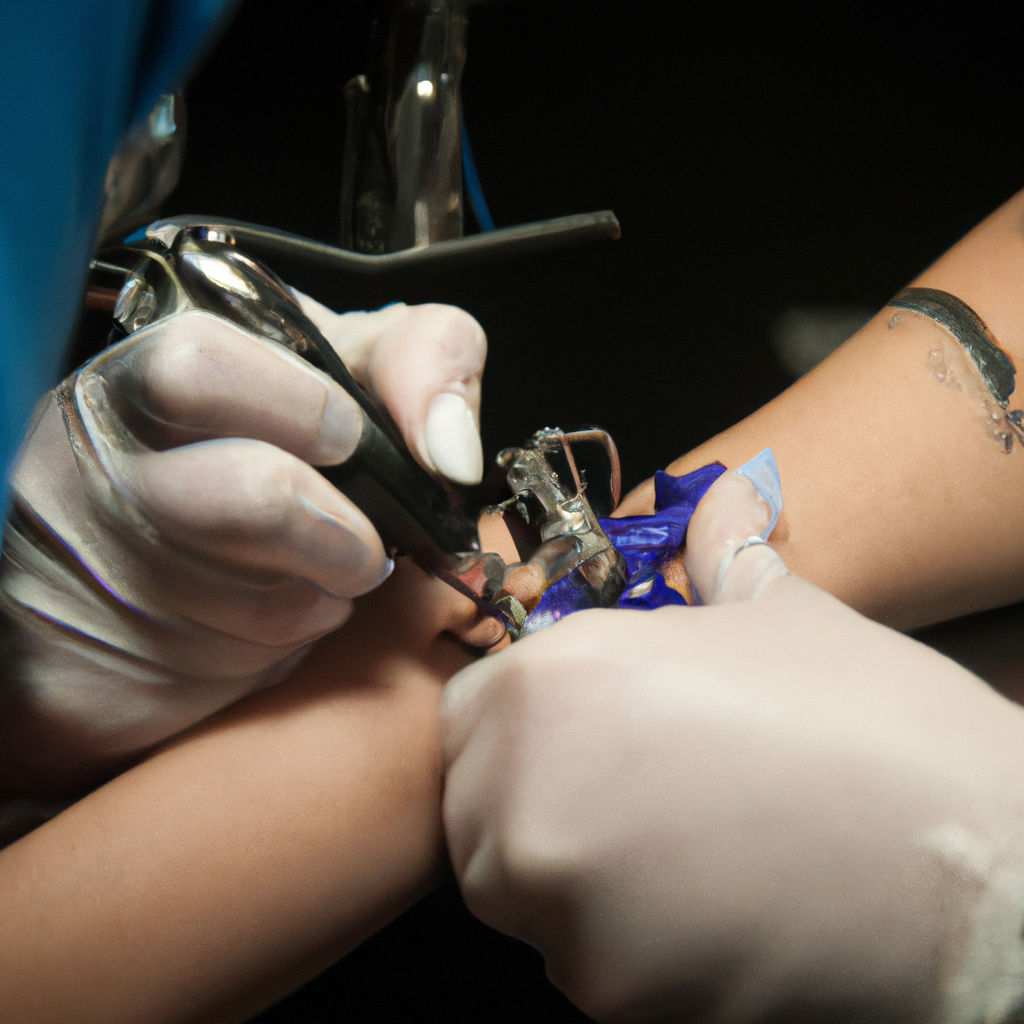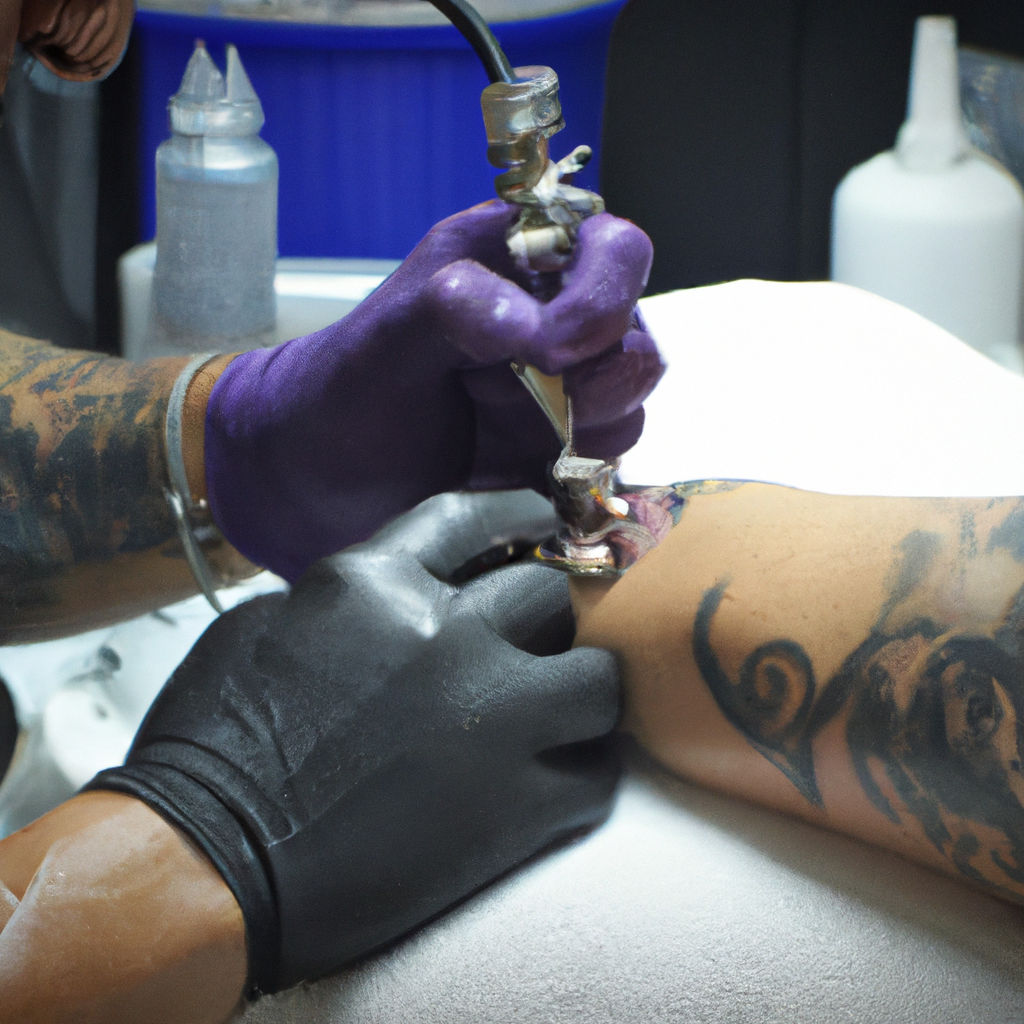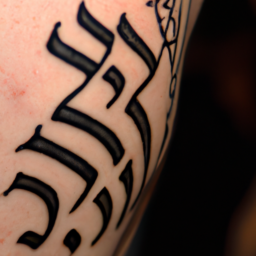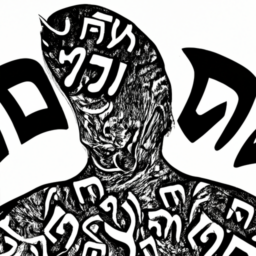“From Ancient Scripts to Modern Skin: Hebrew Tattoo Translations in 2024”
The Ancient and Profound Significance of Hebrew Tattoo Translations
For centuries, tattoos have served as significant forms of self-expression. In recent years, however, Hebrew tattoo translations have begun to stand out in this cultural phenomenon. Drawing upon a rich historical and religious significance, Hebrew ink not only adorns the skin but also speaks volumes about one’s spiritual or philosophical beliefs.
The Hebrew Language in Ancient Scriptures
The Hebrew language, the foundation of these tattoos, has an intrinsic historical and religious relevance that lends this kind of body art its profound aura. Ancient Hebrew, often identified as the language of the Bible, has roots dating back to around the 10th-century BCE. It is documented in diverse scriptures, from religious tomes like the Torah and the Old Testament to historical records of ancient Israel. This divine language is often believed to hold spiritual power, making it a compelling choice for tattoos.
Then there’s the script itself; the square script or the astonishing beauty of the Hebrew calligraphy, also known as “Ashurit”, which evolved around the 6th century BCE, provides an aesthetic appeal as well. Combined with the historical and spiritual depth offered by Hebrew texts, the aesthetic charm of its script makes Hebrew tattoo translations a preferred choice for many. This illustrates the intertwined relationship between body art and human history, faith, and culture.
Whether it’s the eloquent simplicity of their sweeping lines and curves or the profundity of sentiment conveyed through their characters, Hebrew tattoos offer an intriguing way for individuals to narrate their personal stories, making ancient scriptures a part of their very skin. These tattoos serve as a testament to the role of this ancient language in enriching the panorama of personal expression in our modern world.
Symbolism and Deeper Meaning of Hebrew Letters
The rich history and profound significance of the Hebrew language play a crucial role in its widespread appeal in the world of tattoo artistry. Each Hebrew letter carries a depth of meaning and symbolism, making it a powerful medium for symbolic self-expression. These enigmatic and elegant characters, replete with profound cultural and spiritual undertones, are much more than mere aesthetic embellishments.
The Intricate Symbolism of Hebrew Letters
Every Hebrew letter corresponds to a number and symbolizes particular concepts or elements, thereby offering a unique layer of interpretation when used in tattoos. For instance, ‘Aleph,’ the first letter of the Hebrew alphabet, represents the ‘master’ or ‘lord,’ denoting leadership or the beginning. It is often a favourite choice among tattoo enthusiasts who resonate with this symbolism.
Several Hebrew letters, such as ‘Hey’ and ‘Yod,’ have strong associations with divine energy and spiritual awakening, making them highly fitting for those seeking to express their spiritual beliefs or journeys. Such spiritual connections contribute extensively to the popularity of Hebrew tattoos.
Transformation of Hebrew from Scriptures to Skin Art
The Hebrew language, traditionally steeped in religious texts and scriptures, has seen an enticing evolution in the form of skin art in contemporary society. The shift from holy scrolls to human skin marks a significant role in the popular culture worldwide.
The Cultural Shift from Sacred Scrolls to Tattoo Art
Despite some religious restrictions related to body modifications in Judaic doctrines, Hebrew tattoos have gained a global following. They represent a modern way of expressing individuality, personal beliefs, or affinity for this ancient Semitic language.
Moreover, Hebrew tattoos provide a poignant illustration of humanity’s innate desire for connection and understanding. By inscribing these characters on their skin, individuals not only showcase their appreciation for the language’s complex yet captivating nature. They also create a bridge, however symbolic, to the ancient Israelite culture and its rich spiritual lore.
In conclusion, the evolution of Hebrew from ancient religious texts to worldly tattoo art highlights the ongoing influence of this ancient language in our contemporary world. At the same time, each Hebrew letter, with its intricate symbolism and deep-rooted significance, presents an enriching canvas for personal expression and cultural appreciation.

Understanding Popular Hebrew Phrases in Tattoos
Hebrew-based tattoos, due to their profound significance, secured a special place in contemporary body art. These tattoos often feature popular phrases that are rich in spirituality and meaning. “Chai,” for instance, implies life and is highly sought after as it signifies joy, vitality, and the divine essence of existence in Jewish teachings. Similarly, “Shalom” which, apart from being a salutation, also translates into peace, completeness, and harmony.
The phrase “ahava,” meaning love, signifies unconditional affection and is a favorite among tattoo enthusiasts. “Kadosh,” denoting sanctity, is also widely chosen for its spiritual depth. While these are only a handful, they exemplify the aura of mystique and profoundness that Hebrew phrases bring to tattoos.
Navigating Through the Complexities of Hebrew Translations
Translating Hebrew, though, is not without its obstacles, contributing to the vital need for accuracy in translations especially in the realm of tattoos, which are relatively permanent representations of the phrases or symbols. Hebrew, intrinsically, is a nuanced language with individual letters often representing concepts and can change entirely based on context or form.
Moreover, Hebrew gets read and written from right to left, differing from most languages, potentially leading to mix-ups. Incorrect translations can result in tattoos that not just veer from the intended meaning, but can sometimes portray the opposite or even offensive meanings, causing regret and embarrassment.
For instance, a slight misplacement or omission of a dot or a line could transform ‘peace’ into ‘chaos.’ This stresses the necessity for accurate understanding and translation of Hebrew text for tattoos. Ensuring accuracy not only preserves the authenticity of this enriched language but also upholds the deeper significance these tattoos bear for the wearer.
Optimized keyword: Accurate Hebrew tattoo translations, complexities of Hebrew translations, popular Hebrew phrases in tattoos.
The Role of Hebrew Tattoo Translation Services in 2024
As body art becomes increasingly popular in today’s age, so does the demand for unique and meaningful designs. Hebrew tattoos, with their aesthetic appeal and profound meanings, have emerged as a leading trend. However, given the complexities of the Hebrew language, accurate translation is pivotal to ensuring that the symboled depiction truly reverberates with the aspirant’s desire. Consequently, the role of Hebrew tattoo translation services has climaxed in significance.
Professional Hebrew tattoo translation services offer holistic solutions, striving to deliver precision, cultural pertinence, and true representation of the ancient language’s spirit. Their expertise is rooted in comprehensive knowledge of the Hebrew language and its literary and cultural context. Adept in navigating the linguistic nuances and symbolic intrinsics of each Hebrew letter, these professionals play a crucial role in preventing regrettable tattoo blunders caused by mistranslation.
The value proposition of these services lies not just in linguistic expertise, but also in integrating user personalization with cultural and religious sensitivity. They strive to ensure that the translated design respects religious sentiments and does not inadvertently offend either the individual or a community.
Case Studies: Regrettable Mistakes and Successful Translations
The importance of accurate Hebrew tattoo translation can be best understood by investigating real world instances. A noteworthy case is that of a lady who, intending to get her partner’s name (Ryan) tattooed in Hebrew, ended up with a tattoo that read “NRY,” an insignificant jumble of letters, instead.
On the other hand, some cases underline successful Hebrew tattoo translations. One such example is a man who got the phrase “Strength through Unity” accurately translated to Hebrew and tattooed. The proper translation not only resonated with the person’s desired message but also encapsulated the profound imagery and symbolism that the Hebrew language stands for.
Such instances exemplify the stark difference between an accurately translated tattoo and a misinterpreted one. They underscore the importance of seeking professional assistance from qualified Hebrew tattoo translation services, amply illustrating how they help navigate cultural and linguistic complexities, delivering meaningful body art for personal expression.

Utilizing Technology for Accurate Hebrew Tattoo Translations
In today’s age, technology holds a prominent role not just in our day-to-day tasks, but also in more intricate processes such as language translations. This holds true even in the domain of tattoo artistry, where Hebrew tattoo translations are increasingly being facilitated by technological advancements.
Artificial Intelligence (AI) has emerged as a promising tool in this sector. AI based translation softwares are equipped with comprehensive repository of phrases, idioms and syntactical rules which they can apply while translating text from one language to another, in this case from English to Hebrew. These programs gives users the convenience of getting instant, accurate translations, which is crucial in the tattooing industry where mistakes can be permanent and regrettable.
Language Apps and Online Platforms
Language applications are another blessing of technology, offering a user-friendly interface for individuals to learn and understand Hebrew letters and their meanings. They typically come with pronunciation guides and contextual examples, thereby aiding the process of translation.
Online platforms that offer Hebrew tattoo translation services also harness the power of technology to simplify and streamline the translation process. These platforms house professional translators who use cutting-edge software to ensure accuracy.
However, the effectiveness of these tools also depends on the user’s understanding of the Hebrew language and culture. Therefore, tech solutions definitely aid in Hebrew tattoo translation, but they cannot entirely replace the need for a strong foundation in language comprehension and cultural knowledge.
To conclude, the integration of technology in Hebrew tattoo translations is an exciting development in the realm of body art. It not only reduces the chance of errors but also makes it easy for anyone, anywhere to connect with the ancient Hebrew language in a beautiful and meaningful way. This progress, undoubtedly, paints a promising picture for the future of Hebrew tattoo art.

In conclusion, the significance and impact of accurate Hebrew tattoo translations in contemporary body art and personal expression cannot be understated. The rich history and deep, symbolic meanings held within the Hebrew language give tattoos inscribed in it a unique charm and weight. However, it isn’t just about skin-deep aesthetics. When one decides to permanently inscribe a phrase or word from an ancient, profound language such as Hebrew on their skin, it should rightly embody the intention behind the ink.
Erroneous translations not only mar the visual representation but can bear misleading, and at times, embarrassing meanings. Therefore, it is critical to ensure accuracy and true spirit in Hebrew tattoo translations. With the rise of technology like AI and language apps that make translations more accessible and accurate, it is becoming easier to prevent such errors. However, this doesn’t diminish the crucial role played by professional translation services in ensuring appropriate, culturally sensitive, and accurate renditions of the Hebrew phrases.
Creating awareness around the correct understanding and use of this ancient language in tattoo art is essential. The integrity of the Hebrew language in skin art should be preserved, as it is more than just a trend, it’s about personal expression and, in many cases, spiritual connection. As more people look to Hebrew tattoos as a form of self-expression, the demand for correct translations will only grow.
Putting in the effort to get it right, to truly comprehend the depth of one’s chosen phrase, is a sign of respect for the language, its origins, and oneself. This careful approach to Hebrew tattoo translations extends beyond just precision in language—it’s about being true to one’s intent and one’s chosen symbolism.

